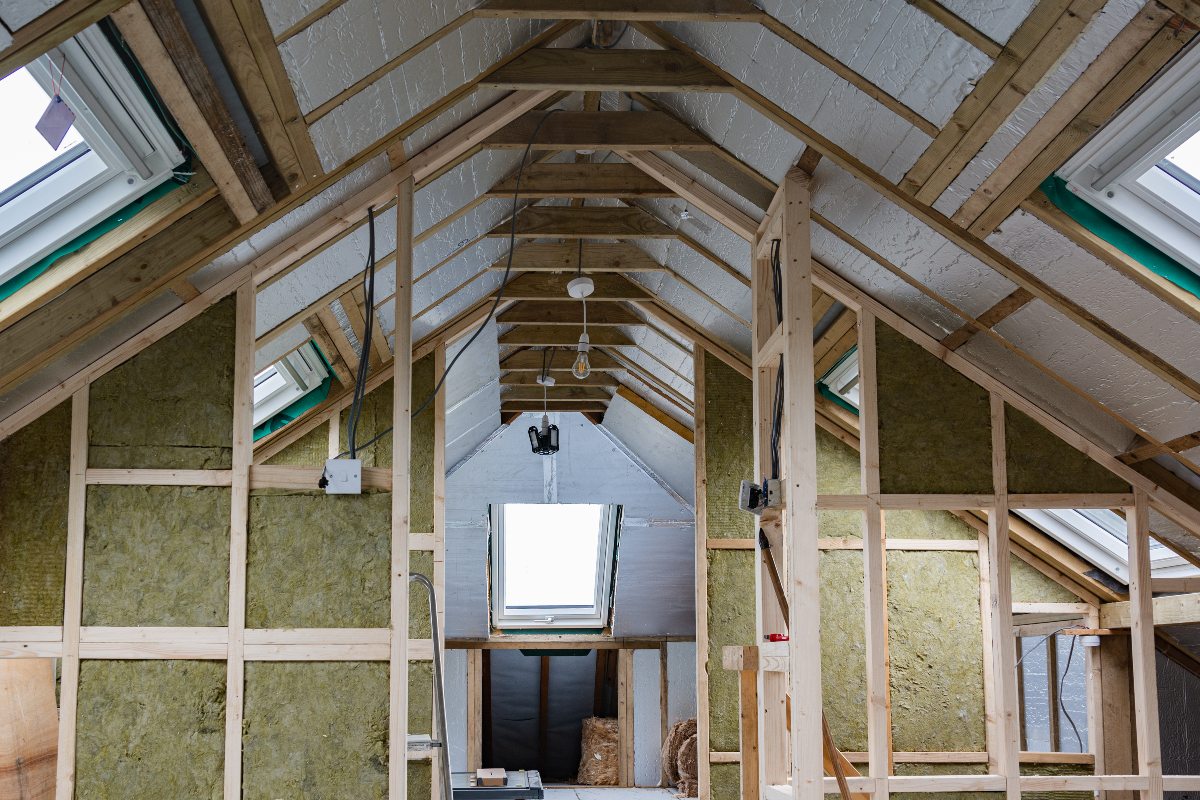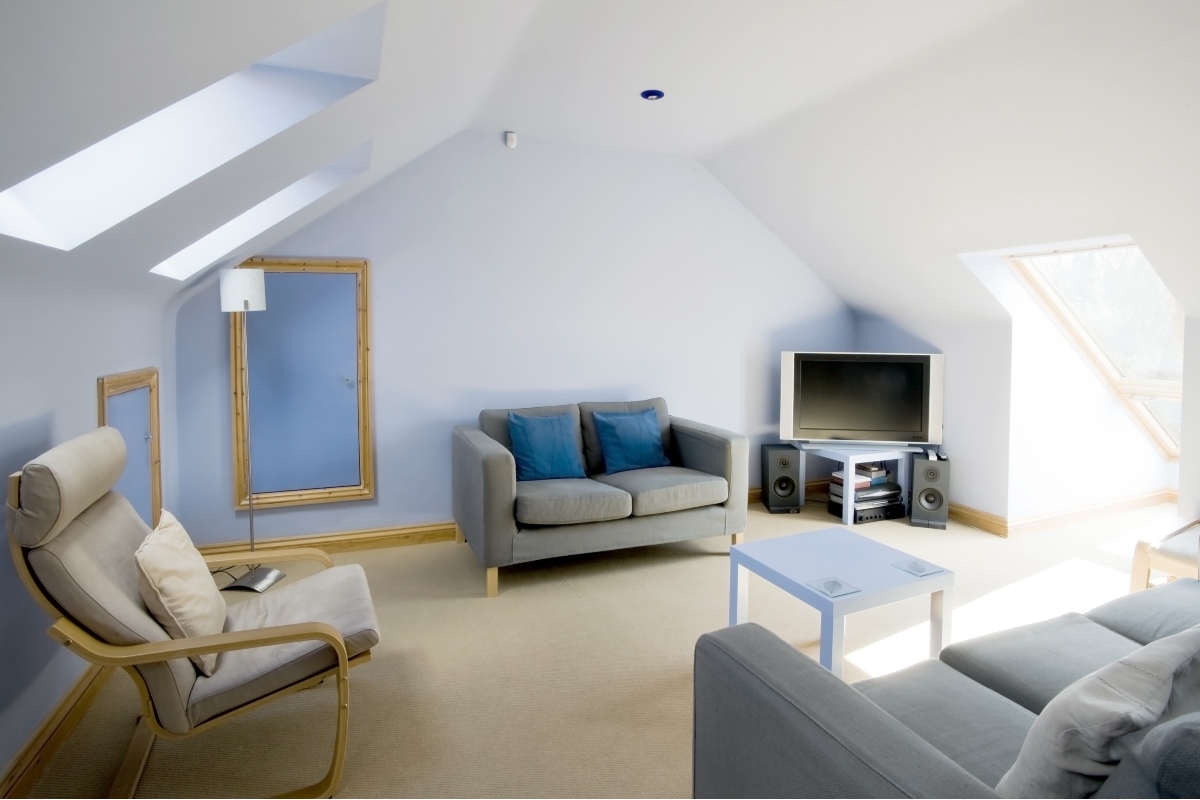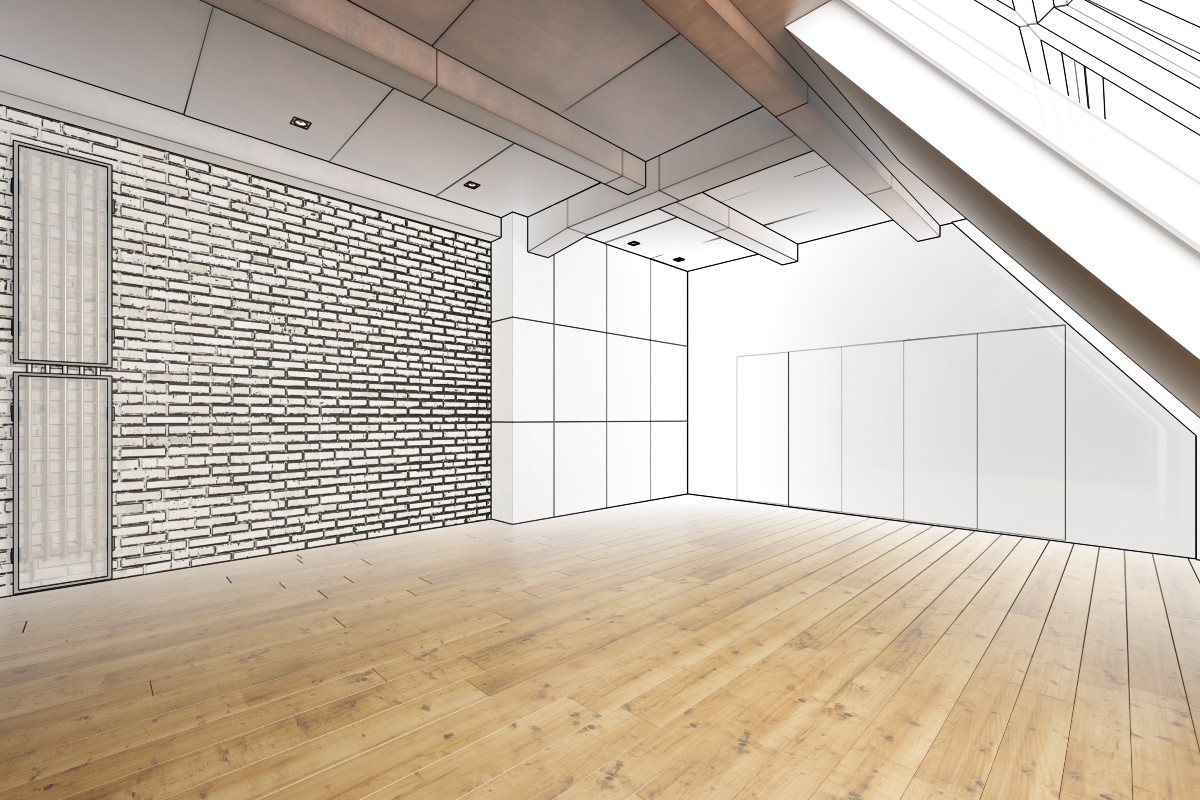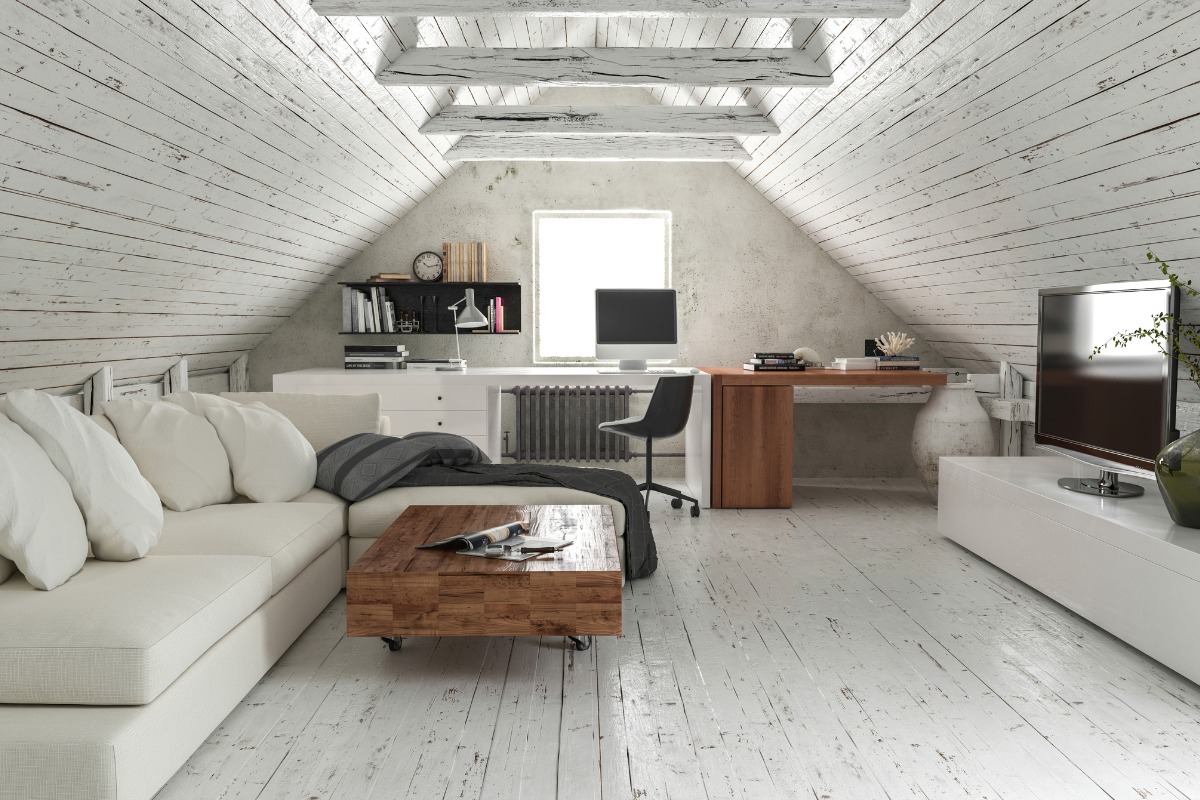A loft conversion is one of the most rewarding ways to create more space in your home. Whether you want an extra bedroom, a home office or a peaceful living space tucked away from the busier parts of the house, converting the...
Converting your loft space into a bright, new room is one of the most exciting home projects you can undertake. A well-designed loft conversion can add space, increase property value, and transform the way you use your home. But while the rewards are great, the risks are real too. Make the wrong decisions early on, and you may face unexpected costs, delays, or a finished loft extension that doesn’t quite work.
In this article, we'll be taking a look at the most common mistakes homeowners make when tackling a loft conversion project, and how you can avoid them.
Ignoring Head Height
Eager homeowners often overlook head height. Building regulations recommend a minimum of 2.2 metres of clear headroom at the highest point of the loft. Without this, your loft room may not count as habitable space.
If your existing roof slope doesn’t allow enough clearance, you might need to consider a dormer loft conversion, a mansard loft conversion, or even lowering the existing ceiling joists of the floor below. Each option has cost and planning implications, so it’s better to deal with the issue upfront than to realise halfway through your attic conversion that your loft is too cramped.
Not Checking Planning Permission Early
One of the biggest mistakes is assuming you don’t need planning permission. While most loft conversions fall under permitted development rights, some definitely don’t. A mansard loft conversion or a hip to gable loft conversion often requires approval, particularly if you’re significantly altering the roof pitch or creating a vertical wall extension.
Properties in conservation areas or areas of outstanding natural beauty also face tighter restrictions. Always double-check with your local authority before committing to any loft conversion design.
Overlooking Building Regulations
Even if you’re lucky enough not to require planning permission, you will always need to meet building regulations. These rules cover structural alterations, fire safety, insulation, and access. A building control inspector will visit at different stages of your loft extension to confirm compliance. Without building regulations approval, you may struggle to sell your property later or even face orders to undo the work.
Skipping a Structural Engineer
Some homeowners dive into construction without consulting a structural engineer. This is risky. A loft conversion often requires new floor joists, steel beams, or adjustments to load-bearing walls. A structural engineer ensures that your existing roof structure can safely carry the new loads and provides calculations for building regulations plans.
Failing to get these details right could compromise the safety of your living space and cause serious long-term issues.
Underestimating Loft Conversion Cost
Budgeting mistakes are common. A simple rooflight loft conversion (sometimes referred to as a Velux loft conversion) may be relatively affordable, but a dormer conversion, mansard loft conversion, or modular loft conversion can be significantly more expensive.
Homeowners often forget to factor in:
-
Labour and material costs (which vary by region).
-
Structural alterations, such as new floor joists or steel beams.
-
Finishes like flooring, plastering, lighting, and built-in storage.
It’s wise to get multiple quotes and leave a contingency budget of at least 10–15% for unexpected expenses.
Poor Loft Conversion Design
A loft conversion isn’t just about cramming in extra space—it’s about creating usable space that feels like a natural part of your home. Rushing through the design phase or copying generic loft conversion ideas can result in awkward layouts, wasted floor space, or dark rooms with inadequate natural light.
Consider carefully the placement of dormer windows, stairs, and storage areas. Consider whether an open-plan space would suit your lifestyle, or if separate rooms would work better for you. Investing in a thoughtful loft conversion design pays off in long-term satisfaction.
Forgetting About Fire Safety
Fire safety is a crucial aspect of every loft extension, yet many homeowners underestimate its importance. Building regulations require safe escape routes, often through a protected stair enclosure. Existing doors on the first floor habitable rooms may need to be upgraded to fire-resistant ones.
You’ll also need interlinked smoke alarms across every level of your home and, in some cases, egress window openings in the loft itself. Ignoring fire safety not only puts your family at risk but also guarantees your project won’t receive building regulations approval.
Choosing the Wrong Loft Conversion Type
Not all types of loft conversions work for every property. A dormer loft conversion is versatile but may look bulky on certain homes. A mansard loft conversion provides maximum floor space but nearly always requires planning permission. A hip-to-gable loft is perfect for semi-detached or end-of-terrace houses, but not possible on mid-terraced houses.
Picking the wrong type can lead to costly redesigns. Consult a loft conversion specialist early to identify what works best with your existing roof structure and long-term plans.
Poor Natural Light and Ventilation
Dark, stuffy lofts are a common regret. Natural light is key to making a converted loft feel comfortable and inviting. Relying on a single window in a sloping roof is rarely enough.
Dormer windows are a great way to bring in daylight while increasing usable space beneath a sloping roof. Roof windows, Juliet balconies, or vertical wall glazing can also transform the room. Don’t forget ventilation—without it, your new loft conversion may become uncomfortably hot in summer and damp in winter.
Forgetting Insulation and Energy Efficiency
Another oversight is underestimating insulation. A new loft conversion must meet the energy efficiency standards outlined in building regulations. Without sufficient thermal insulation, heating costs will soar.
There are two main approaches: the warm roof method (insulation placed above rafters) and the cold roof method (insulation between rafters). Sound insulation is also worth considering, especially in terraced houses or semi-detached homes, where noise travels easily between floors.
Sacrificing Too Much Floor Space to Stairs
Stairs are a necessary part of any loft conversion, but poorly planned staircases can eat into valuable floor space below. Some homeowners place them awkwardly, creating bottlenecks or unnecessarily cutting into existing living space.
A well-thought-out stair design strikes a balance between safety and efficiency. Space-saving staircases may be possible, but they must still comply with building regulations.
Not Considering the Party Wall
If you share walls with neighbours, the Party Wall Act applies. Failing to follow this step is a recipe for disputes. You’ll need to notify your neighbours before any structural work begins. If the loft conversion affects the shared wall—such as cutting into it to insert steel beams—you’ll likely need a formal party wall agreement.
Keeping your neighbours informed and on board from the start makes the process smoother and avoids unnecessary delays.
Failing to Future-Proof the Loft
A common mistake is designing a loft conversion only for immediate needs. For example, turning it into a playroom when your children are small, without considering how it might work later as a bedroom or office.
Think about how the loft room could adapt over time. Installing built-in storage, ensuring good natural light, and creating flexible layouts will make the converted loft a valuable asset for decades to come.
DIY Instead of Using a Loft Conversion Specialist
Trying to tackle a loft extension yourself may seem like a way to save money, but it’s one of the biggest mistakes you can make. Loft conversions entail complex structural modifications, stringent fire safety considerations, and adherence to building regulations.
A professional loft conversion specialist has the knowledge and experience to handle these challenges. They’ll also liaise with your local building control inspector, saving you time and stress.
Overlooking the Roof Structure
Your loft extension relies heavily on the strength of your roof structure. Cutting corners here is dangerous. The existing roof may need reinforcing, especially if you’re adding a dormer conversion, a mansard loft conversion, or a hip to gable loft.
Ignoring structural requirements could lead to sagging, leaks, or worse. Always have your existing roof assessed by a qualified structural engineer.
Forgetting the Impact on the Existing Roof
Some homeowners focus so much on the new loft conversion that they overlook its impact on the existing roof. Adding dormer windows, a flat roof extension, or altering the roof pitch can dramatically alter the look of your property.
If you live in a row of terraced houses, a poorly matched dormer conversion may stand out for all the wrong reasons. Always consider the external impact as part of your loft conversion design.
Poor Use of Storage Space
It’s easy to get carried away with creating living space and forget about storage. But clever built in storage is one of the biggest advantages of a converted loft.
Sloping roofs and awkward corners are perfect for fitted wardrobes, cupboards, or shelving. Without them, you may find your loft room quickly becomes cluttered.
Not Factoring in Labour and Material Costs
Many homeowners underestimate how much of the loft conversion cost is comprised of labour and materials. Prices fluctuate depending on your location, the type of loft extension, and the finishes you choose.
Failing to account for these can leave you short halfway through the project. Always request itemised quotes and compare them carefully.
The Conversion Guy – Expert Loft Conversions in Derbyshire & Staffordshire
Are you ready to take the plunge and turn your unused loft into a beautiful, practical space? Well, look no further! The Conversion Guy is committed to delivering a loft conversion experience that is second to none.
With over 40 years of experience in loft conversions, we are looking forward to helping you transform your unused space into something truly special! We love talking lofts, so be sure to get in touch today or book a free consultation and take the first step towards unlocking your home’s full potential.
From the Learning Centre
Explore our resources and learn about pricing, bathroom refits, kitchen kitchen renovations, loft conversions and many other home improvements in our Learning Centre







